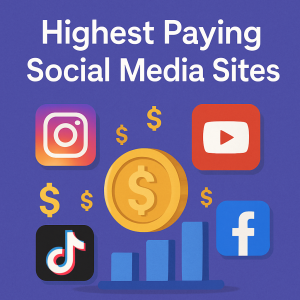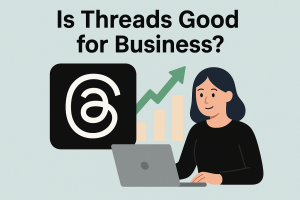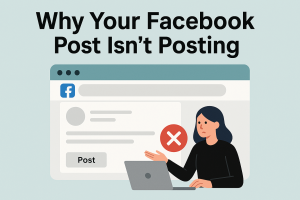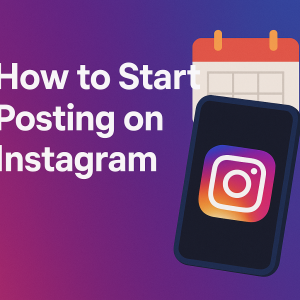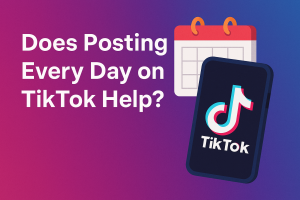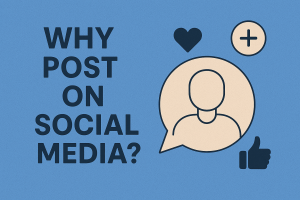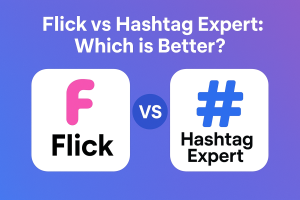Sharing life updates with friends and followers feels natural, but oversharing can turn risky fast. Nearly 84% of adults in regions like Northern and Western Europe actively use social media, highlighting its global reach—and the need for caution. What you publish online often stays there forever, creating opportunities for fraudsters to exploit personal details.
Even harmless-seeming posts—like vacation photos or birthday shoutouts—can reveal patterns hackers use to guess passwords or answer security questions. Things you should never post on social media Location tags, home addresses, or daily routines also expose physical property risks. Balancing authenticity with privacy is key to staying safe.
Platforms like Facebook and Instagram thrive on connection, but oversharing sensitive data invites trouble. Account takeovers, phishing scams, and accidental leaks are common consequences. A single post containing your full name, birthdate, or workplace can give scammers enough to impersonate you.
Understanding what to avoid sharing helps protect your identity and loved ones. Let’s explore high-risk content types and practical ways to enjoy social media without compromising security.
Key Takeaways
- Oversharing personal details increases risks of identity theft and fraud.
- Avoid posting location data, travel plans, or daily routines publicly.
- Fraudsters use birthdays, pet names, and family details to bypass security.
- Regularly review privacy settings on all social media accounts.
- Balance self-expression with caution to maintain digital safety.
Understanding the Risks of Oversharing
Digital interactions often reveal more than intended. A 2023 study found that 62% of data breaches trace back to leaked personal details from social platforms. Even with strict privacy settings, oversharing creates loopholes hackers exploit—jeopardizing your account and those of people you tag.
Privacy and Security Concerns
Posting in real time or tagging your exact place signals when you’re away from home. Burglars use this data to target empty houses. Similarly, mentioning your boss or workplace could expose confidential projects, risking careers. Platforms like Instagram frequently change default settings, making older posts public without warning.
Impact on Friends, Family, and Reputation
Tagging others in compromising situations can damage their trust—or worse. A college student’s viral rant about a professor led to academic probation. Publicly venting about family drama might alienate relatives or attract scammers impersonating them. Always ask: “Could this post harm someone’s safety or dignity?”
Key Factors Behind Social Media Privacy Threats
Social platforms evolve faster than most realize. A 2024 Pew Research study found 73% of users struggle to keep up with shifting privacy features. What worked last month might leave your data exposed today—especially when apps auto-enable new tracking tools after updates.
How Constant Platform Updates Affect Your Data
Automatic location tags on shared photos create hidden risks. Instagram’s 2023 “Map Search” feature, for example, let strangers find public posts by geographic coordinates—even if profiles were private. Many people disable location services but forget to remove metadata from existing uploads.
Platforms like TikTok and Facebook frequently reset privacy defaults during major updates. One survey showed 41% of users unknowingly had old posts set to “public” after policy changes. “Privacy settings aren’t set-and-forget tools,” warns cybersecurity expert Lisa Chen. “They require ongoing audits.”
| Platform | Annual Policy Updates | Common Privacy Risks |
|---|---|---|
| 6-8 | Location tagging defaults, story resharing | |
| 4-5 | Public post visibility, third-party app access | |
| TikTok | 7-9 | Contact syncing, duet permissions |
Seasoned users should think twice before posting, as algorithms now scan images for identifiable details like street signs. A birthday photo with a visible mailbox number gives scammers clues to guess passwords or addresses. Regular account checkups help spot unwanted tag permissions or outdated security questions.
Key things you should never post on social media
What seems like casual online chatter often becomes gold for criminals. A 2023 FTC report revealed that social media scams caused $2.7 billion in losses—with oversharing being the top trigger. From vacation selfies to pet names, harmless posts can unlock doors for fraudsters.
Real-World Examples and Cautionary Tales
In Ohio, a family’s Disney World photos led to burglars emptying their home. The thieves monitored their public Instagram feed, noting when they’d return. “Geotags and timestamps are like GPS for criminals,” explains cybersecurity analyst Mark Thompson.
Another case involved a woman whose birthday post included her rescue dog’s name. Scammers used this detail to reset her bank’s security questions, draining $12,000. Even job promotions can backfire—a Texas engineer accidentally leaked client data in a LinkedIn celebration, resulting in a lawsuit.
High-risk content types include:
- Travel itineraries showing dates away from home
- Documents with visible addresses or ID numbers
- Child’s school name on backpack tags in photos
Cybercriminals piece together details people use casually. A coffee shop check-in plus a pet photo might equal a password guess. Regular users often forget that information shared across platforms creates a vulnerability mosaic. As Thompson warns: “Your digital breadcrumbs are a full meal for identity thieves.”
Protecting Your Personally Identifiable Information
Your digital footprint holds more value than you might realize. Personally Identifiable Information (PII) includes data like birthdates, addresses, and even pet names—details that confirm identity. Cybercriminals collect these fragments to impersonate individuals or bypass security checks.
Why Fraudsters Target PII
A 2023 Identity Theft Resource Center report showed 72% of scams start with stolen PII from social platforms. Seemingly harmless details matter:
“A pet’s name posted in a birthday collage often matches security questions for bank accounts,” notes fraud investigator Clara Mendez.
Fraudsters cross-reference photos and comments to build full profiles—like using a visible license plate number to confirm home addresses.
Strategies for Keeping Your Data Secure
Smart sharing habits reduce exposure:
- Strip metadata from images before uploading (use built-in phone settings)
- Set all posts to “friends only” instead of public
- Blur house numbers or school logos in shared photos
Review privacy settings monthly—platforms like Facebook often reactivate location tags after updates. For sensitive details, consider messaging apps with end-to-end encryption instead of public feeds. A quick audit today could prevent years of identity recovery headaches tomorrow.
Risks of Sharing Travel Plans and Location Data
Announcing vacation dates might seem exciting, but it’s like sending burglars a free invitation. Law enforcement reports show a 22% spike in home break-ins during peak travel seasons—often linked to overshared trip details. Real-time updates give criminals a clear window to act while you’re away.
Preventing Real-Time Vulnerability
Posting pictures from the airport or hotel pool alerts strangers to your empty house. One Florida family learned this the hard way after burglars struck during their cruise—their Instagram Stories revealed departure and return dates. Even tagging friends in vacation posts can expose their homes to similar risks.
Location data paints a dangerous map of your daily routine. Check-ins at gyms, schools, or coffee shops show patterns criminals exploit. A 2023 study found that 38% of burglars use social media to track targets’ day-to-day habits. Photos often store metadata revealing exact timestamps and coordinates, making it easy to pinpoint addresses.
| Platform | Location Features | Risk Level |
|---|---|---|
| Geotags, Map Search | High | |
| Snapchat | Snap Map, Heatmaps | Extreme |
| Check-ins, Event tags | Moderate |
Safer ways to share adventures include:
- Posting trip recaps after returning home
- Disabling location services for accounts
- Using apps like Photo Metadata Remover before uploading
Adjust privacy settings on your accounts to limit who sees future plans. As cybersecurity expert Rachel Kim notes: “Delayed sharing protects both property and peace of mind.”
Securing Financial and Sensitive Details
Financial documents scattered on your kitchen counter stay private—but their digital versions can travel worldwide in seconds. A 2023 FTC report found that photos containing credit cards or bank statements led to 34% of identity theft cases. Even blurred backgrounds in seemingly safe images can reveal account numbers or home addresses when enhanced by AI tools.
Fraudsters scan profiles for insurance cards, tax forms, or paycheck stubs. One Minnesota woman’s LinkedIn photo showing a visible employee badge gave hackers access to her company’s payroll system. “Criminals don’t need your physical wallet—they just need one careless post,” warns cybersecurity specialist Derek Mills.
| Platform | Common Risks | Prevention Tips |
|---|---|---|
| Visible mail with addresses | Crop or blur sensitive areas | |
| Venmo | Public transaction descriptions | Set payments to private |
| PayPal | QR codes in screenshots | Disable auto-login features |
Protect your home and finances with these steps:
- Enable two-factor authentication for access to banking apps
- Review profile backgrounds before posting photos
- Delete old posts showing IDs or signatures
Monthly account audits help spot leaks. A Virginia man discovered his leaked mortgage papers through Google Images—years after sharing them on Facebook. Treat financial photos like spare keys: keep them locked away from public view.
Guarding Photos and Personal Memories
Personal photos capture cherished moments, but they often carry hidden risks. A 2024 study found 58% of shared family images contain identifiable location data through metadata—digital breadcrumbs that expose more than intended. While these visuals help us connect, they can unintentionally invite privacy invasions.
Protecting Childhood Moments
Parents celebrating milestones sometimes forget that 1 in 3 child identity theft cases stem from stolen photos. Images showing school uniforms or backyard playsets reveal patterns criminals use to build trust. “Kids’ photos shared publicly today could resurface in unexpected contexts years later,” warns child safety advocate Dr. Emily Torres.
Safer sharing practices include:
- Using private albums for trusted audience members only
- Cropping out house numbers or license plates
- Avoiding real-time posts about school events
The Hidden Language of Image Data
Modern smartphones embed GPS coordinates and timestamps in every picture—a lot of sensitive information. Instagram’s 2023 algorithm update made this metadata visible through map features, even on private accounts. One family discovered strangers could pinpoint their home using sunset photos’ hidden coordinates.
Strengthen your security with these steps:
- Disable geotagging in camera settings
- Use apps like MetaRemove to strip metadata
- Review platform-specific location sharing defaults monthly
“A single photo’s metadata can reveal your entire weekend routine,” notes cybersecurity analyst Raj Patel. “Treat every upload like a puzzle piece that shouldn’t complete the map.”
By limiting your audience and scrubbing digital footprints, you preserve memories without compromising security. Remember—what stays private today protects your tomorrow.
Managing Work-Related Disclosures
Workplace frustrations might tempt public posts, but 1 in 5 HR managers report checking candidates’ social profiles during hiring. Venting online creates a permanent list of grievances that future employers could uncover. A 2024 case study showed a teacher lost job offers after criticizing school policies on Facebook—even with privacy settings enabled.
Sharing sensitive details risks both professional identity and company security. Photos of office whiteboards or client documents often contain confidential data. Cybersecurity firm Kaspersky found 28% of data leaks start with careless employee posts. Always ask: “Could this detail help competitors or harm my reputation?”
| Platform | Common Risks | Real-World Case |
|---|---|---|
| Project announcements | Engineer fired for revealing unreleased tech specs | |
| Twitter/X | Political workplace rants | Marketing director faced backlash for partisan posts |
| Anonymous complaints | User identified via niche job details, leading to termination |
Controversial opinions about colleagues or clients often spiral into news headlines. A hospital worker’s vaccine mandate post went viral, resulting in disciplinary action. Keep political debates and internal conflicts off public feeds—use encrypted messaging apps for sensitive discussions.
“Assume every work-related post is a press release,” advises career coach Lena Rivera. “If it wouldn’t appear in company news, don’t share it.”
Regularly audit your list of connections to exclude competitors. Update privacy settings to limit who sees employment history. Protecting your professional identity requires treating online activity as an extension of your resume.
Tips for Maintaining Secure Social Media Profiles
Protecting your online presence requires smart habits in a connected world. With 3.6 billion internet users interacting daily, outdated security practices leave accounts vulnerable. Simple adjustments create layers of defense against evolving threats.
Using Two-Factor Authentication and Strong Passwords
Two-factor authentication (2FA) blocks 99% of automated attacks, according to Microsoft. Pair this with passwords mixing symbols, numbers, and uppercase letters. Avoid common phrases like “Password123″—hackers crack these in seconds.
| Method | Security Level | Setup Time |
|---|---|---|
| SMS Codes | Basic | 2 minutes |
| Authenticator Apps | High | 5 minutes |
| Hardware Keys | Maximum | 10 minutes |
Update passwords every 90 days—especially for internet banking-linked accounts. A 2024 Google study found reused passwords caused 52% of breaches. Use a manager like Bitwarden to track unique combinations securely.
Regularly Curating Your Friends List and Privacy Settings
Audit connections quarterly. Remove accounts you don’t recognize—fake profiles often target inactive friends lists. Adjust settings to limit post visibility to trusted circles rather than “Public.”
Platforms like Instagram introduce new internet features monthly. Enable login alerts and review app permissions during updates. As cybersecurity expert Mia Zhang advises: “Assume every new follower needs verification—it’s your first firewall.”
Stay informed about global security trends through newsletters like KrebsOnSecurity. Proactive habits turn your world of connections into a shielded network, not a liability.
Balancing Authenticity with Caution on Social Media
Building genuine connections online doesn’t require sacrificing privacy. Many users struggle to share life milestones while guarding sensitive details—a tension amplified by platforms urging constant updates. The key lies in thoughtful curation: revealing enough to engage, but not enough to endanger.
Consider workplace achievements. Celebrating a promotion showcases professional growth, but mentioning your exact job title and employer could help scammers impersonate HR staff. One Chicago accountant faced theft attempts after sharing a LinkedIn post with her full name and department. “Authenticity attracts, but boundaries protect,” advises digital strategist Marco Perez.
Practical approaches for safer sharing:
- Use nicknames or initials instead of full names in casual posts
- Blur company logos in job-related photos
- Share vacation highlights after returning home
Personal stories create relatability, but oversharing invites risks. A college student’s heartfelt essay about overcoming debt went viral—then attracted phishing scams targeting her bank details. Regular privacy checkups help maintain this balance. Review tagged photos, limit location histories, and pause before posting emotional updates.
“Your digital life should mirror real-world interactions: open yet guarded. You wouldn’t shout medical bills in a crowded park—treat sensitive posts the same way.”
By filtering what enters the public sphere, you preserve both connection and security. Identity theft prevention starts with recognizing that every shared detail contributes to your vulnerability mosaic. Stay engaging, stay cautious—your online presence shouldn’t demand compromises.
Conclusion
Navigating social platforms safely requires treating every share as permanent. Posts revealing travel dates, home layouts, or workplace details create long-term vulnerabilities. Even casual updates can expose patterns fraudsters exploit years later.
Regularly audit friend lists and update privacy settings—platforms often reset defaults during updates. Check location tags and metadata removal tools monthly. Friends-only settings help control who sees sensitive moments without sacrificing connection.
Three rules simplify safer sharing:
- Review photos for hidden identifiers like license plates
- Post trip highlights after returning home
- Use nicknames instead of full names in celebratory posts
Every post matters in shaping your digital legacy. Scammers archive public content, turning forgotten shares into future threats. Proactive habits—like scrubbing metadata and limiting real-time updates—protect both privacy and reputation.
Stay vigilant by scheduling quarterly account checkups. Update passwords, prune inactive connections, and test audience visibility settings. Your online presence thrives when authenticity meets boundaries—because today’s thoughtful choices matter tomorrow.






